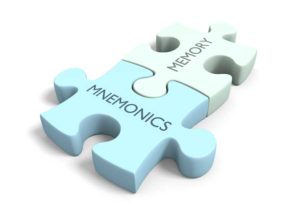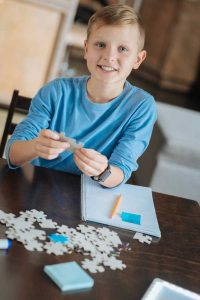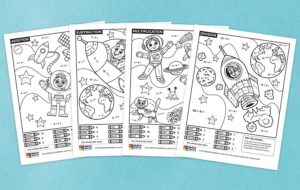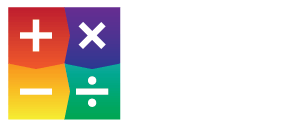8 Fun Ways to Practice Math Facts and Improve Recall
When kids are taught to understand math facts, they gain confidence they need to be able to solve more challenging math problems.
A child that is having trouble understanding math problems does not mean they are not intelligent enough. Chances are they forget easily.
Improving how they learn can provide a much better learning experience that makes it fun. Utilizing different and new techniques to make learning math more interesting will help them retain the knowledge of what they are learning and build up the strength of their memory and recall.

The following are ways in which we can make math more fun to learn while helping a child remember what they are taught.
#1: Coloring Pages
Using color math charts aid in memory recall. By using colors with math, it will help with the recognition of math facts and keep the minds attention.
Children that are encouraged to color math charts, will remember visually how they look and retain what they have been taught.
You can download our set of FREE coloring pages here.
#2: Cheat Sheets
Cheat sheets may not look like the best solution to learning math, but it helps them gain the confidence they need to solve math problems. Cheat sheets can be used to help the students study and reduce math anxiety.
On a cheat sheet, the student can have examples on how to solve a math problem, definitions, and procedures on how to work the problems out.
#3: Math Tricks

Tricks on learning and grasping math are a great way for kids to retain what they are taught. It makes the math look simple, encouraging children to tackle the problems that appear complex that they would normally shy away from.
Want to amaze your students? Check out these 4 simple math tricks that will save them time and make math a bit easier.
#4: Math Mnemonics

Mnemonics are short sayings that depict how to solve a math problem. By using Mnemonics, they remember more.
A common example is “Please Excuse My Dear Aunt Sally,” which assists the children to remember the order of certain operations such as multiplication, addition, division, and subtraction.
Here are 8 fun math mnemonics to teach your students.
#5: Math Songs

Learning through song is one way that children can enhance their learning experience. Using memorable rhymes and repetitive phrases in song, can assist the student in short and long-term memory.
Using song to engage the student will create a positive as well as uplifting environment, thus reducing anxiety and establishing memorable phrases in memory that can later be recalled.
We put together a list of 5 of the best websites for math songs on a variety of math concepts to get you started.
#6: Games

Children of all ages enjoy games. Introducing games into a math lesson will be of great advantage to children, as they will not be aware that they are learning while playing.
If you are looking for a free math fact game for your students to play, try Space Challenge! Space Challenge will quickly assess your student’s mastery of math facts in addition, subtraction, multiplication, and division. While it’s a great tool, it’s not as great as our latest product.
Blast Off goes above and beyond any other teaching tool available! With Blast Off, your students will learn as they practice with the help of multi-sensory reviews and corrections.
They will also develop complete mastery of the facts and the views (horizontal, vertical, and pre-algebraic), while earning fun badges that show their progress.
As students progress through each level, you are able to view their latest progress and compare it to the rest of the class, identifying the facts they need to work on the most.
#7: Flash Cards

Flash cards are a popular and easy way for students to review and practice math facts. Whether you buy them, have the students make them, or print them off, flash cards are popular for a reason. They are often used to help reinforce the memory of already learned facts.
With so many facts to master, it can become tiresome and time consuming to produce all of the flash cards by hand and it can become expensive to provide a set of flash cards for every student. So wouldn’t it be nice if there was an easier way? If you agree, you need to see this…
Countdown is a digital flash card tool that we developed for teachers. It makes it quick and easy to conduct daily practice with your whole class at the same time. If your students are attending from home, they can easily access your Countdown lessons from home on a computer, phone, or tablet.
Using the read, say, and write method, Countdown is a multi-sensory tool that helps students develop long-term memory of math facts. This leads to faster recall and better scores on math tests, and what teacher doesn’t want that?!
#8: Puzzle Games

Puzzle games are fundamental in making math fun to solve. These games can be found easily in the dollar stores for only a $1.
You can use puzzles to help your students practice their math facts. Such activities can be played alone or in a group.
We have put together some quick and easy instructions for a puzzle activity our own children and students enjoy. Our blog post, Teach with Puzzles, explains what you need to know to get started.
Now That You Know All Of That…
What methods will you be using with your students?
Using the suggestions above can help your students learn to love math. Regular use will help improve their memory recall, reduce their math anxiety, and up their confidence.

